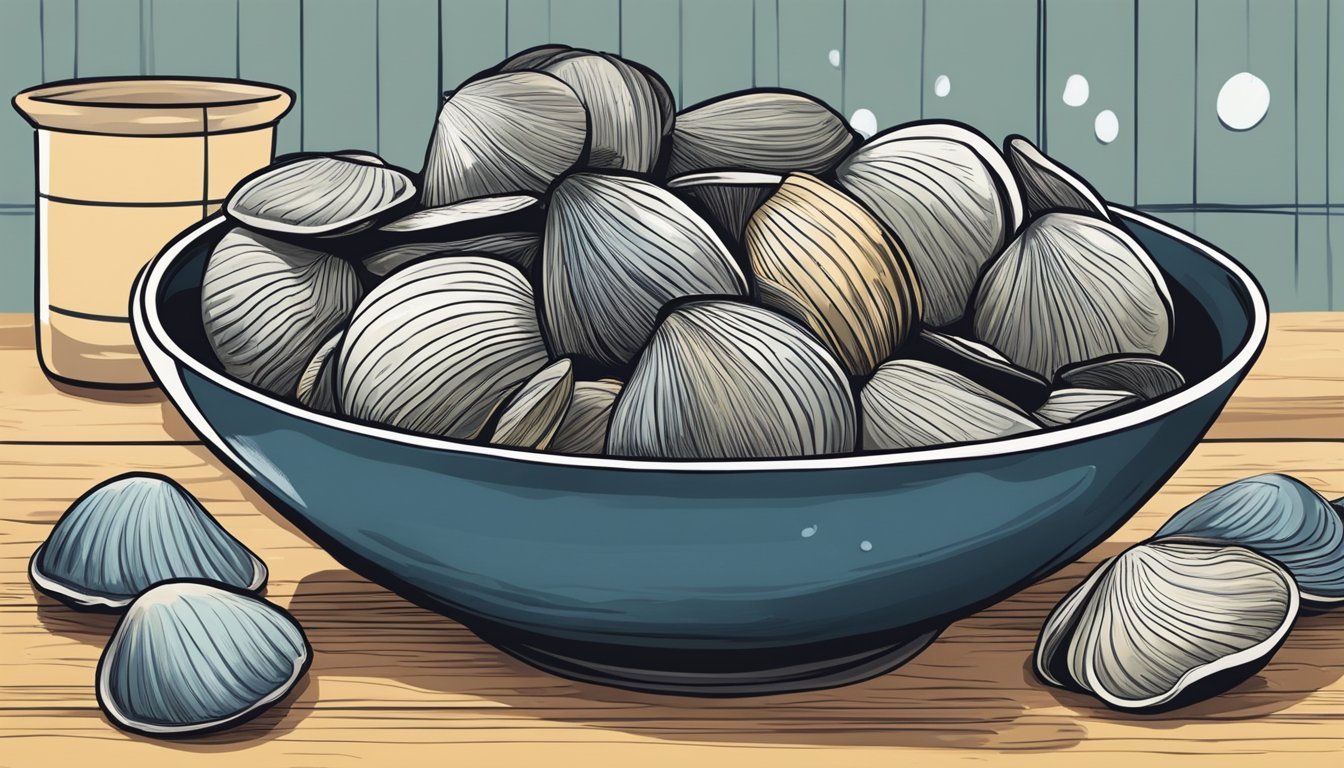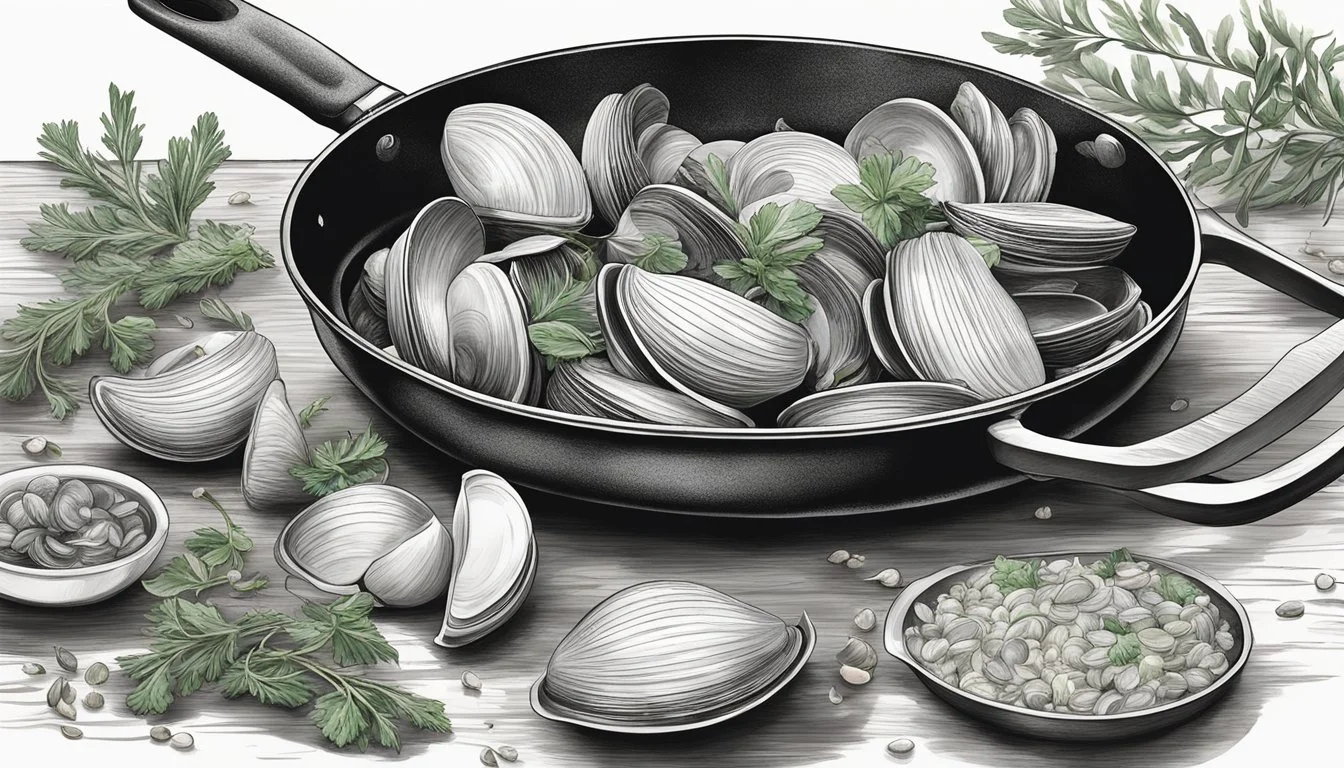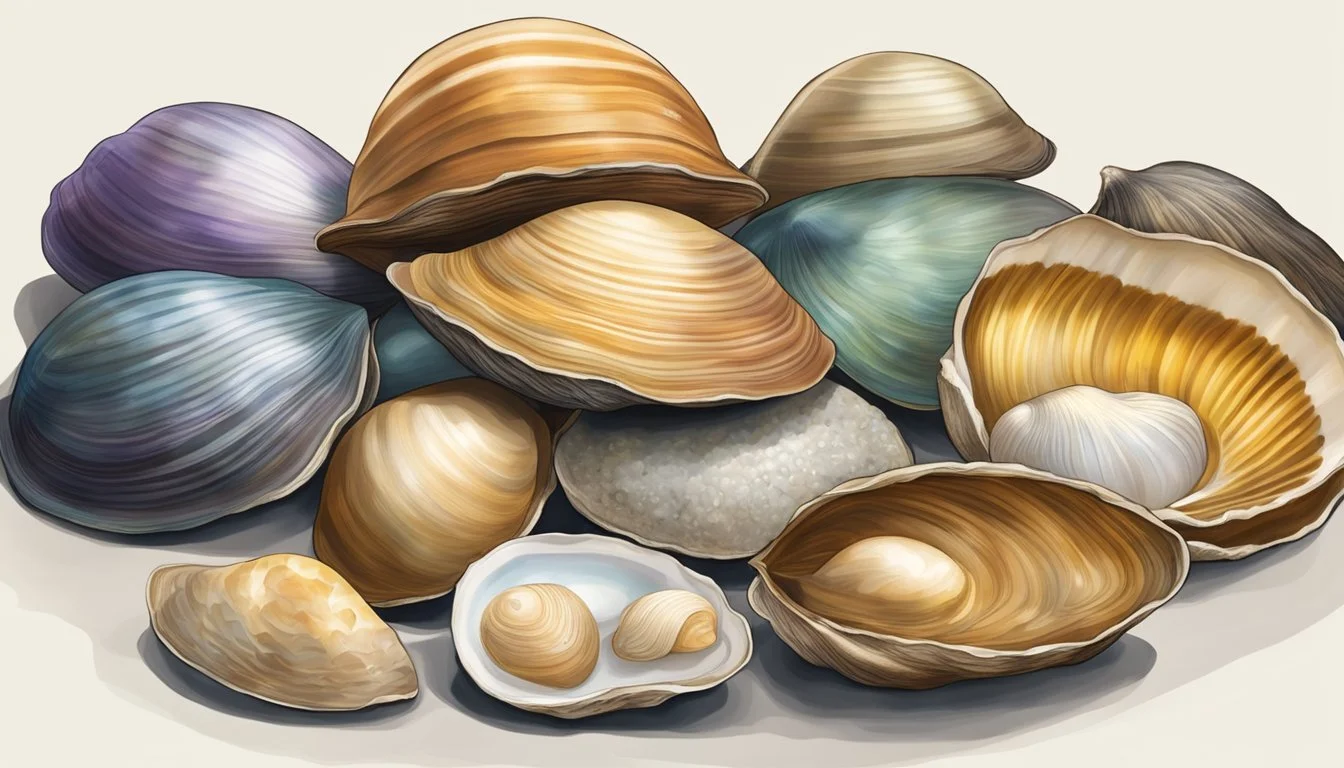How Long Do Clams Last?
Shelf Life and Storage Tips
When it comes to seafood, clams (What wine goes well with clams?) are a versatile and delicious ingredient favored by many. They can enhance a dish with their distinct, oceanic flavor. However, understanding the shelf life of clams is crucial for both their taste and safety. Freshness is paramount, as it directly influences the quality and edibility of these shellfish. (What wine goes well with shellfish?) Typically, live clams can last between 4 to 5 days when properly stored in the refrigerator. The integrity of the cold chain from the moment of purchase to when they are stored at home plays a pivotal role in extending their shelf life.
Canned clams, on the other hand, offer a much longer shelf life. They usually remain safe for consumption 1 to 2 years past their printed date if they have been stored in a cool, dry place and the can is intact. Once opened, canned clams should be used within 7 to 10 days. It is also essential to adhere to the use-by dates and storage guidelines provided by manufacturers to ensure the clams remain safe to eat.
Correct storage is key to maintaining the clams' freshness. Live clams should be kept in a breathable container, covered with a damp cloth to ensure they remain moist but not submerged in water, which could cause them to die. They should be placed in the coldest part of the refrigerator, usually at the back, to ensure an environment that slows down their metabolism without freezing them. Keeping clams fresh preserves their flavor and texture, making them a delicious addition to a variety of dishes.
Determining Clam Freshness
When assessing the freshness of clams, one must examine both the integrity of the shells and the response to sensory tests. This approach ensures that the clams are safe to consume and maintain their quality.
Visual Inspection of Shells
One should begin by closely examining the shells of the clams. Fresh clams have shells that are tightly closed or that close when lightly tapped. The surface of the shell should be free from cracks and chips. Open or cracked clams often indicate that the clam is no longer alive, which compromises freshness and potentially poses a risk of foodborne illness. It is essential to discard any clams with damaged shells.
Intact: Shells should be closed or close when tapped.
Damage-Free: No cracks or chips on the shell surface.
Clean: Shells should appear clean, but slight sand or seaweed is natural.
Smell and Tap Test
The smell of the clams can also be a key indicator of freshness. Fresh clams have a clean, ocean-like scent. If the clam has an off-putting or strong fishy odor, it likely means the clam is no longer fresh. In addition, a simple tap test can be conducted. Gently tap on the shell; live, fresh clams will react by closing up. If there is no movement, the clam may be dead and should not be consumed.
Scent: Must smell like the ocean, not fishy.
Tap Reaction: Live clams should close their shells when tapped.
By performing both visual and sensory tests, one can confidently determine the freshness of clams before preparation.
Optimal Storage Conditions
Storing clams properly extends their freshness and usability. Correct refrigeration methods, the use of ice, and proper freezing techniques are critical.
Refrigeration Best Practices
When refrigerating clams, one should place them in the coldest part of the refrigerator, typically at the back. Clams should be stored under a damp towel to keep them moist yet allow them to breathe. It is essential to store them in containers that are not completely sealed, as clams require airflow to stay alive. For shucked clams, an airtight container is more suitable, and these will last for 2-3 days in the fridge.
Utilizing Ice for Fresh Clams
Clams can be kept fresh by placing them on a bed of ice. To do this, one should spread a layer of ice at the bottom of a container, add the clams, and then cover them with another layer of ice. Replace the ice as it melts and ensure the melting ice can drain away, as clams should not be submerged in water. It's important to cover this setup with a moist burlap sack or a damp cloth.
Freezing Techniques for Clams
For long-term preservation, clams can be frozen. Before freezing, they should be cleaned of any debris. It's best to place them in freezer bags or airtight containers, with excess air pressed out. Label these containers with the date. Frozen clams are best stored at 0°F (-18°C) or below and will last for up to three months. Shucked clams in particular should be frozen this way, as freezing whole, live clams can result in texture changes that affect their quality when cooked.
Preparation Before Cooking
Before cooking, clams must be thoroughly cleaned to remove sand and grit, and should be soaked in saltwater to ensure they are ready for a pleasant dining experience.
Cleaning Clams to Remove Grit
One begins the preparation of clams by vigorously scrubbing each clam with a stiff brush under running water. This process is essential to remove debris from the clam's shell. It is recommended to place the clams in a colander during rinsing to ensure that any dislodged grit can easily wash away without recontaminating the clams.
Soaking Clams in Salt Water
Soaking clams in a saltwater solution mimics their natural environment and encourages them to expel any sand from inside their shells. Prepare a solution using one teaspoon of salt per cup of water, enough to fully submerge the clams. Allow them to soak for 20 minutes to an hour. If the clams have a siphon neck, extending them while submerged helps the filtration process. One may wish to add a few strips of seaweed to the water to further replicate the clams' natural habitat, which can stimulate them to purge more effectively. After soaking, remove the clams carefully to leave any expelled grit at the bottom of the container.
Cooking and Utilizing Clams
Clams are a versatile seafood ingredient that enhances flavor profiles across various cuisines. They can be enjoyed in simple preparations or complex dishes, where their unique taste is highlighted.
Tips for Cooking Fresh Clams
Fresh clams should be cooked until they just open, which indicates they're done. Overcooking may lead to a rubbery texture. Before cooking, clams must be cleaned to remove sand and grit. Here's how one should prepare them:
Cleaning: Rinse clams in cold water, scrubbing the shells if necessary.
Purging Sand: Soak clams in saltwater (1/3 cup salt to 1 gallon of water) to encourage them to expel sand, optionally adding cornmeal to facilitate the process.
Rinsing: After purging, rinse the clams thoroughly to remove any remaining impurities.
Cooking Methods:
Boiling
Steaming
Grilling
Sautéing
When cooking, clams are done as soon as their shells open. It's important to discard any clams whose shells do not open during cooking, as this is a sign they may not be safe to eat.
Recipes Benefiting from Clam Flavor
The savory taste of clams makes them an excellent addition to various recipes, where they can be the star or play a supporting role in enhancing the overall flavor profile. Here are some dishes where clams shine:
Clam Chowder: A hearty soup where clams provide a briny depth, best complemented by potatoes, cream, and seasoning.
Pasta with Clam Sauce: Clam juice and cooked clams adding a seafood essence to pasta dishes.
Paella: Clams contribute both flavor and presentation to this traditional Spanish dish.
Key Ingredients to Pair with Clams:
Garlic
White Wine
Lemon
Herbs like parsley and thyme
Through these cooking methods and recipes, one can fully utilize the fresh, oceanic flavor clams bring to the table. Whether it's a comforting bowl of clam chowder or a gourmet pasta dish enriched with clam sauce, clams offer a unique taste that's hard to replicate with any other seafood.
Safety Considerations and Spoilage
Ensuring the safety and quality of clams is paramount to prevent foodborne illness. This requires vigilance in identifying spoiled clams and understanding the risks associated with their consumption.
Identifying Spoiled Clams
Smell: Fresh clams should have a slight, briny odor. A strong, unpleasant smell is an indicator that the clams may be spoiled.
Appearance: Clams should have closed shells. If the shells are open, lightly tap them; if they do not close, the clam is likely dead and not safe to consume.
Shell Integrity: Inspect clams for cracked shells or damage, as these are signs of potential spoilage.
Risks of Foodborne Illness
Consumption of spoiled clams can lead to foodborne illness due to harmful bacteria.
Raw clams are particularly susceptible to contamination and must be handled and stored properly to maintain their quality and safety.
Perishable nature: Clams are perishable and require appropriate storage conditions to minimize the growth of bacteria.
Post-Cooking Storage
Proper storage of cooked clams is critical to maintaining their freshness and safety for consumption. Cooked clams should be stored under specific temperature conditions and consumed within a short timeframe to ensure quality and prevent foodborne illness.
Storing Leftover Cooked Clams
After cooking, clams should be placed in a sealed container or covered with a tight-fitting lid. It is important to store them in the refrigerator at a temperature of 40°F (4°C) or below. They should ideally be placed on the lower shelves of the refrigerator, where it's coldest.
Maximum Storage Time: Cooked clams should be consumed within 2-3 days.
Best Practices for Shellfish: To prevent cross-contamination, cooked clams should be kept separate from raw seafood and other raw proteins.
Reheating and Refreezing
Reheating Cooked Clams:
Cooked clams can be reheated but should reach an internal temperature of 145°F (63°C) for safe consumption.
Reheat only the amount you will eat, as repeated reheating of the same clams diminishes quality.
Refreezing:
It is generally not recommended to refreeze cooked clams as it can greatly affect their texture and flavor.
If absolutely necessary, clams should only be refrozen once and within the initial 2-3 day window. Prior to refreezing, the clams should be placed in a plastic bag or an airtight container, with the air removed to prevent freezer burn.
Comparison with Other Shellfish
When considering the shelf life of shellfish, it's important to note that different types can have varying storage times. Clams and mussels, (What wine goes well with mussels?) for example, are both popular bivalves with differing preservation requirements.
Shelf Life of Mussels vs Clams
Mussels generally last up to two days when stored properly in a refrigerator, often needing to be consumed within 24 hours for the best quality. Clams, on the other hand, have a slightly longer shelf life. Live clams can be refrigerated for up to seven days, provided they remain closed. Clams that have open shells that do not close when tapped should be discarded as they are not safe to eat.
Mussels: 1-2 days in the fridge.
Live Clams: Up to 7 days, if shells remain closed.
Storing Varieties of Bivalves
The storage method for bivalves varies according to the type:
Soft-shell clams, such as steamers, have a refrigeration window of three to four days.
Fresh shellfish like oysters and hard-shell clams often last up to a week if kept in a cool, moist environment within the fridge.
When storing these shellfish, one should place them in an open container covered with a damp cloth to ensure they remain moist but not submerged in water.
Soft-Shell Clams: 3-4 days in the fridge.
Other Bivalves: Up to 7 days with proper moisture.








